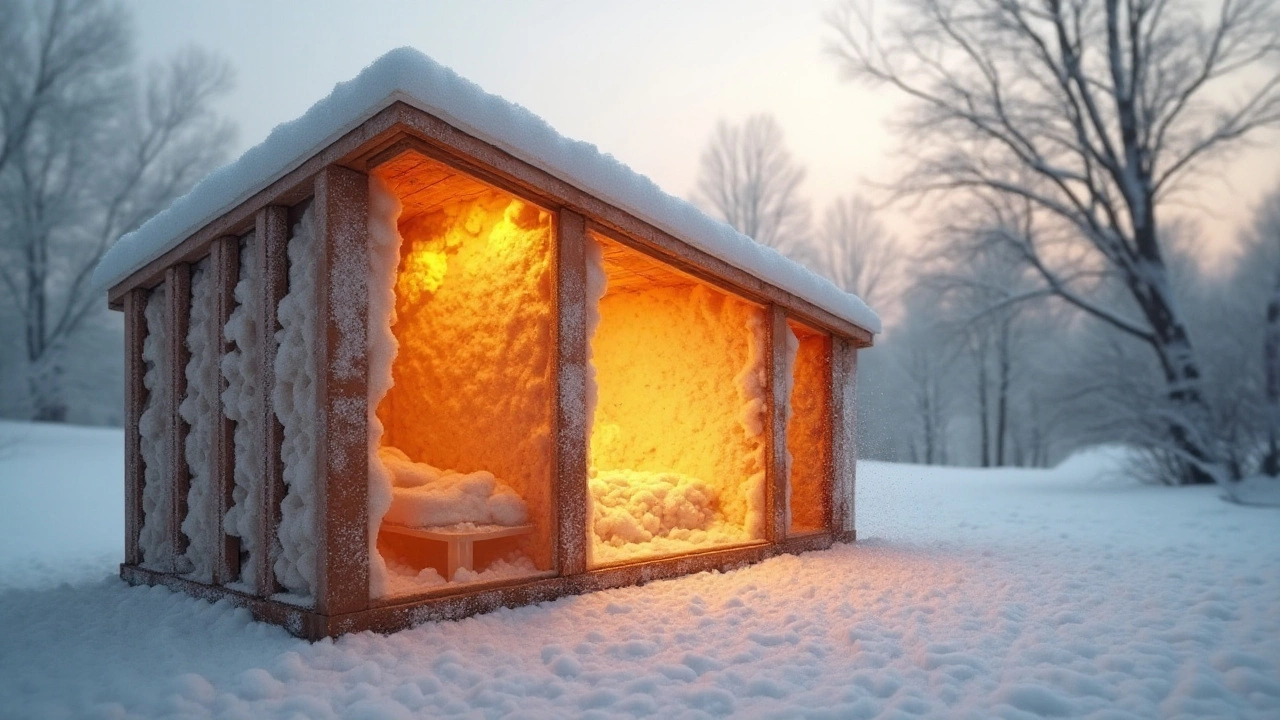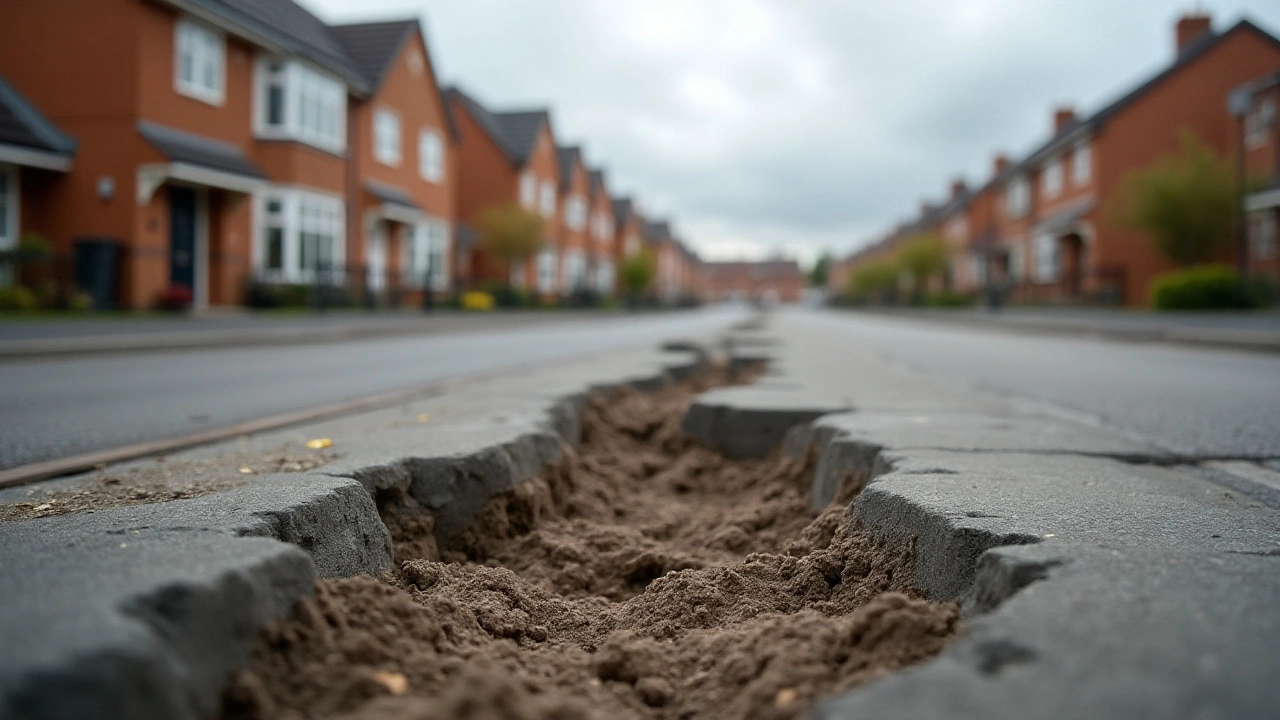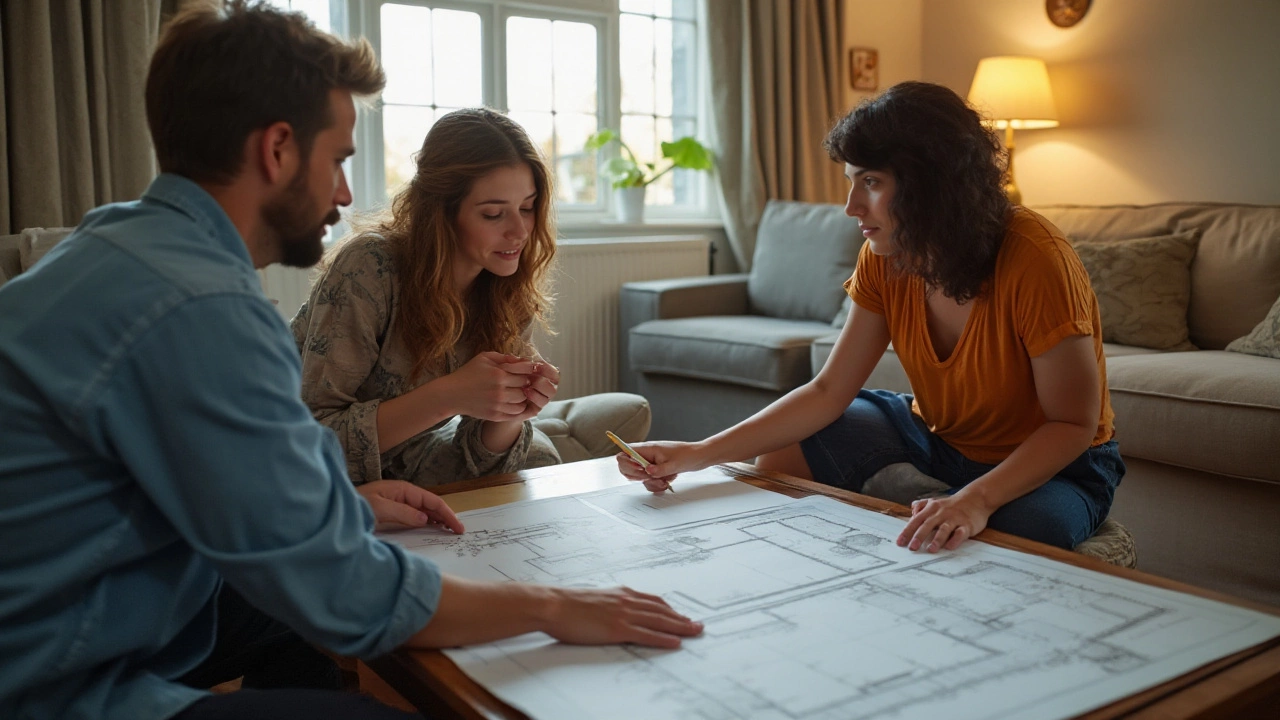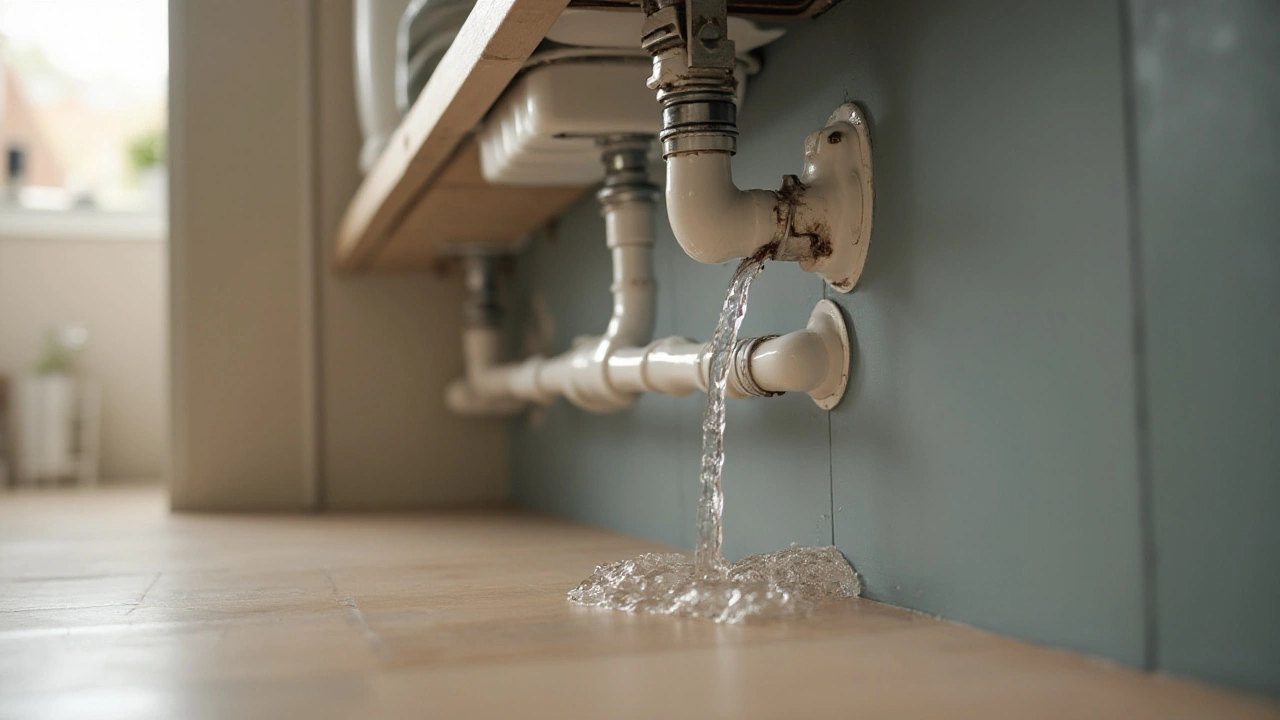Homeownership is often seen as one of life's major milestones, and for many, purchasing a new build offers the allure of a fresh start with minimal maintenance concerns. However, even the newest constructions are not immune to defects. Understanding common building issues can help prospective homeowners make informed decisions.
From foundation mishaps to faulty wiring, the pitfalls of new structures can be varied and complex. Each year, a significant number of new builds arise with underlying flaws that can lead to costly repairs and unwanted surprises post-purchase. While navigating the nuanced world of real estate, arming oneself with knowledge about these common defects is essential.
This breakdown serves not only to highlight prevalent issues but also to provide actionable insights into resolving and preventing potential disasters. Knowledge is indeed power, especially when making what could be the most substantial investment of your lifetime.
Foundation Faults
The foundation of a building serves as its backbone, and any compromise in its integrity can spell disaster for the entire structure. In new builds, foundation faults are often overlooked initially, but they can lead to significant structural issues over time. These defects can arise from numerous factors, including soil composition, poor workmanship, and inadequate design planning. A weak foundation can manifest in various ways, such as cracks in walls or floors, uneven floors, or doors and windows that refuse to close properly.
The extent of foundation problems can vary widely, from minor cosmetic issues to major structural threats that necessitate expensive repairs. In many cases, foundation faults stem from improperly compacted soil, which cannot adequately support the weight of the structure. When the ground shifts or settles unevenly, it forces undue stress on the building, leading to cracks and other structural damages. Understanding the soil type is crucial, as expansive clay soils can swell and shrink dramatically with weather changes, exacerbating any existing issues.
Contractors sometimes cut corners due to budget constraints or tight deadlines, leading to poor workmanship. This includes inadequate reinforcement of the foundation materials, resulting in weaknesses that become apparent only after the building settles. Properly poured concrete, reinforced with appropriate elements, is essential for a stable foundation. Oftentimes, these mistakes aren’t intentional but are the result of miscommunication or oversight during construction.
A notable issue with some modern new builds is an incorrect understanding of load distribution. The design should account for all load factors, such as the weight of the building and any external forces, like wind and seismic activity. When designs are flawed, it can lead to differential settlement, where different parts of the building settle at different rates, causing structural problems. Regular inspections by qualified professionals can help detect early signs of foundation faults before they grow into more significant issues.
An interesting fact from a survey conducted in 2022 by a leading construction firm revealed that nearly 30% of new builds had some form of foundation issues within the first year of completion. Addressing these problems early can prevent more severe damage and save homeowners significant costs in the long run.
"A solid foundation is the key to building something that will last," an old adage that rings particularly true when it comes to construction, according to civil engineer and industry expert Anna Greenfield.
For potential homebuyers, understanding these common pitfalls can serve as a deterrent to overlooked problems during the inspection process. A comprehensive home inspection focusing on the foundation can reveal hidden defects that might not be obvious to the untrained eye. If irregularities are discovered, it's advisable to consult with a structural engineer to assess the issue and suggest remediation strategies. In some cases, installing additional piers or underpinning the foundation can mitigate shifting and stabilize the structure.

Roofing Problems
When it comes to new builds, roofing problems are among the most common yet frustrating defects that homeowners face. The roof is a critical component of any structure, protecting the interior from the elements and contributing to the overall stability of the building. Surprisingly, despite its importance, roofing issues abound in the construction world. These range from improper installation to the use of substandard materials, both of which can lead to leaks, mold growth, and a significant reduction in the home’s lifespan.
One frequent defect is poor installation, which often results from untrained labor or rushed construction schedules. The improper application of shingles, for instance, can leave gaps that eventually lead to water ingress. This, combined with insufficient sealing around skylights, chimneys, and vents, makes the roof particularly vulnerable. Moreover, inadequate attic ventilation can compound issues, leading to ice dams in colder climates and premature aging of the roofing materials.
Another critical concern is the selection of low-quality materials by builders looking to cut costs. While these might seem like viable options initially, they often fail to withstand harsh weather conditions, leading to curling or dislodged shingles. A durable roof is not just about the shingles themselves; it’s about the entire roofing system, including the underlayment and support structures. With the right knowledge, homeowners can avoid these pitfalls by insisting on quality materials and verified installation practices.
"Investing in a strong, well-installed roof pays off significantly in the long-term, preventing minor issues from snowballing into costly repairs," says Chris Magwood, a sustainable building expert.
For any keen-eyed homebuyer or owner undertaking an inspection, certain telltale signs can help identify immediate or future roofing problems. Look for uneven shingle lines, sagging spots, and, when inside, any staining on ceilings or walls indicative of leaks. These are warning signs that require immediate attention to prevent further structural damage. Importantly, engaging a professional roofer for a thorough inspection can detect problems that are not easily visible to the untrained eye.
Considering maintenance and proactive care can extend the life of the roof dramatically. Homeowners should schedule regular inspections and clean gutters to prevent blockages that exacerbate water issues. Moreover, trimming overhanging branches can prevent physical damage during storms, a simple action that can save thousands in potential repairs. It's also wise to revisit warranties and understand the nuances of what is covered, particularly in new constructions.
| Common Defect | Potential Impact |
|---|---|
| Poor Shingle Installation | Leaking and water damage |
| Substandard Materials | Frequent repairs and reduced lifespan |
| Inadequate Ventilation | Increased energy costs, mold growth |
In essence, understanding roofing problems in new builds can make the difference in ensuring a lasting and resilient home. Proactive engagement with knowledgeable professionals, demand for quality, and clear inspection routines can safeguard your investment and ensure peace of mind. By taking these steps, you maximize the integrity and functionality of your home, allowing you to focus on the joys of living in a reliable, comfortable space.

Plumbing and Electrical Issues
When it comes to new builds, plumbing and electrical issues can be some of the most frustrating setbacks for homeowners. Imagine moving into your brand-new dream home, only to discover that water pressure is low, drains are slow, or outlets are dead just when you need them. These problems not only disrupt daily life but can also signify larger underlying issues.
Let's begin with plumbing. One common defect often encountered in new constructions is poorly installed or improperly sealed pipes. This can lead to leaks which are not just annoying but can cause significant water damage over time if unchecked. Every now and then, new homes may even suffer from more serious plumbing woes, like incorrect grading, which leads to inadequate drainage. This might sound trivial, but it's damaging enough to erode your foundation over the years. It’s noteworthy that the American Society of Home Inspectors reports that over 60% of newly inspected homes reveal at least one minor plumbing issue.
Electrical problems are another area where defects in new builds emerge quite frequently. These can range from simple issues such as non-functioning outlets to potentially dangerous faults like improper grounding or wiring not meeting the local code standards. Flickering lights or frequently tripped breakers might signal deeper problems that should not be taken lightly. Electrical complications not only pose a hazard but can also be costly to repair once the walls have been closed up. As noted by a seasoned home inspector, "It's not uncommon to find that builders skip proper electrical inspections under tight deadlines," emphasizing the importance of a thorough check by a licensed professional post-construction.
To mitigate these issues, it’s vital to work with trusted contractors and insist on thorough inspections. A step often overlooked in the excitement of new home ownership is hiring an independent inspector to go over the plumbing and electrical installations. This third-party check can uncover potential problems that might not be immediately visible. Actionable tips include running all faucets and testing each outlet before closing the deal on your new home. With electrical systems, ensure that your breaker panel is labeled correctly – a task that's surprisingly left undone in many new builds.
Consider keeping a table of key plumbing and electrical checkpoints to run through:
| Issue | Potential Consequence | Action |
|---|---|---|
| Leaking Pipes | Water damage, mold growth | Inspect seals and joints |
| Improper Wiring | Fire hazard, non-functional circuits | Ensure compliance with codes |
| Low Water Pressure | Reduced efficiency | Check for clogs or leaks |
In short, while the polished exterior of a new build may suggest perfection, diving deeper reveals potential defects in essential systems like plumbing and electrical. By being informed and proactive, homeowners can identify these issues early and address them before they escalate. A new home should be a source of joy, not a host of hidden hassles, so remember to focus on these crucial details during your next purchase.

Insulation Inefficiencies
When considering the integrity of a new build, insulation inefficiency might not be immediately apparent, yet its impact on both comfort and energy consumption is significant. Proper insulation serves as the guardian against extreme temperatures, ensuring your home remains a refuge regardless of the season. However, many newly constructed homes suffer from inadequate insulation, which can lead to a variety of issues. Poorly insulated homes often face unpredictable temperature fluctuations, which not only diminish comfort but also strain heating and cooling systems resulting in increased utility costs. When builders cut corners on insulation, it is usually to reduce construction expenses, leaving future homeowners to bear the brunt of long-term expenses.
Common indicators of subpar insulation in a newly built home include uneven temperature distribution, higher-than-expected energy bills, and drafts in areas around windows and doors. Faulty insulation can be attributed to a number of factors, including the use of low-quality materials or improper installation techniques. In some cases, construction noise can seep through the walls more readily, which can be bothersome. The selection of insulation materials should comply with local building codes and standards, yet not all builders adhere strictly to these guidelines. It's worth noting that modern building codes emphasize energy efficiency, which should push builders to strive for at least a minimum standard of insulation.
To spot insulation inadequacies, a thorough home inspection is crucial. Thermal imaging cameras are particularly effective for identifying areas where heat loss is prevalent. A professional inspector will also check attic spaces, wall cavities, and even basements for adequate coverage. Investing in good insulation can yield tremendous savings over time. According to the Environmental Protection Agency, proper insulation can save homeowners up to 15% on heating and cooling costs. Here’s a quick checklist to ensure insulation efficiency in new builds:
- Ensure all walls and ceilings are properly insulated with high R-value materials.
- Check for air leaks around windows, doors, and electrical outlets.
- Confirm that attic and crawl space ventilation is adequate to prevent moisture buildup.
- Opt for double-glazed windows which provide an additional barrier against heat transfer.
"Investing in the right insulation is not just about energy efficiency; it's about enhancing comfort and reducing long-term living costs," remarks a leading expert from the Insulation Institute.Prioritizing this aspect during the construction phase can not only elevate a property's market value but also ensure sustainability in the long run.

Author
Damon Blackwood
I'm a seasoned consultant in the services industry, focusing primarily on project management and operational efficiency. I have a passion for writing about construction trends, exploring innovative techniques, and the impact of technology on traditional building practices. My work involves collaborating with construction firms to optimize their operations, ensuring they meet the industry's evolving demands. Through my writing, I aim to educate and inspire professionals in the construction field, sharing valuable insights and practical advice to enhance their projects.